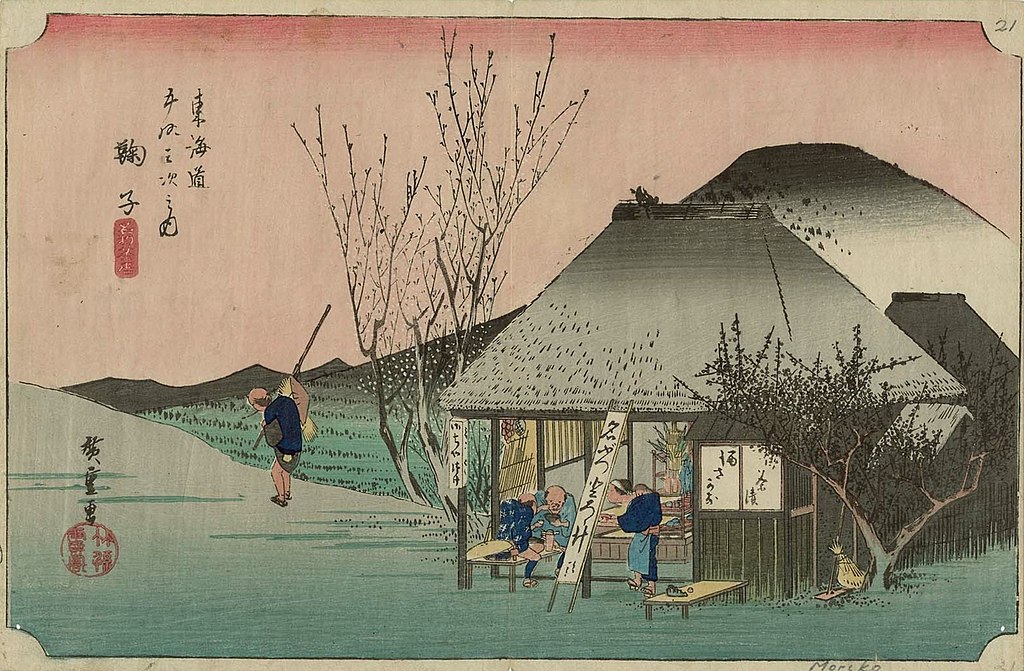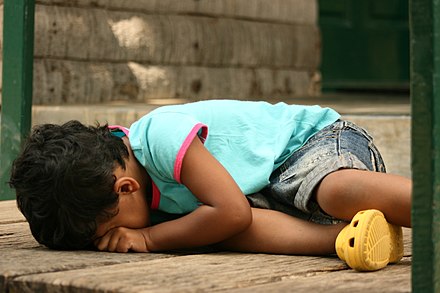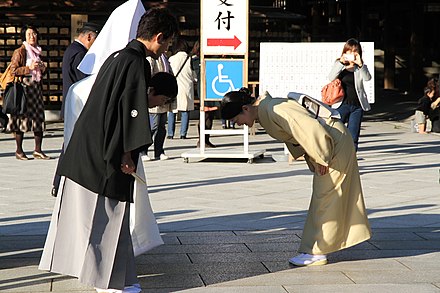
“Ningen means ‘in-the-world’ itself. Yet, it also means as well the individual person who is in the world. Therefore, if human being is not simply the individual person, it is also not simply society. Within human being, these two are unified dialectically” (Watsuji Tetsuro – Ethics as the Study of Human Being).
Watsuji first set forth his ideas on ethics in Ethics as the Study of Human Being (1934), and, later on, developed them in his magnum opus, the three-volume Ethics (Rinrigaku, 1937-1949). As Robert E. Carter, the translator of Rinrigaku, is the author of the Watsuji entry in the Stanford Encyclopedia of Philosophy, I chose to offer a different viewpoint here, and felt that Thomas P. Kasulis’ presentation of Watsuji’s ethical approach in Engaging Japanese Philosophy was especially thorough and insightful.
Unlike Heidegger, Watsuji insists on the requirement for ethical considerations
During his short period of study in Europe, Watsuji read Heidegger’s Being and Time, which had just been published. While he was impressed by Heidegger’s phenomenological method, he soon started to criticise his strict focus on the individual. Kasulis notes that, as he later embarked on his study of ethics, Watsuji felt uneasy about Heidegger’s avoidance of ethical issues. As he emulated Heidegger’s etymological analysis of the German language, and focused on a similar exploration of “the root meanings of the appropriate Japanese words,” Watsuji “uncovered references to a shared interpersonal space, what he called “being in the midst of person and person” or the “between of person and person” (hito to hito no aidagara). “That sensitivity to being-in-the-midst again drove Watsuji’s philosophy in a direction radically different from Heidegger’s.”
Heidegger’s “being-there” (Da-sein) focused on the individual human being, while Watsuji’s focus, already explicited in Fudo, was on “the interhuman.” Kasulis writes: “Watsuji reversed the vector of the analysis, starting with the interaction of betweenness and separating out from it the individual and world. For him, the aidagara, the internally related betweenness … is the primary phenomenological term. Human existence does not discover a world or constitute a world. From the very beginning we find ourselves ‘in the midst’ of a field of engagement.”
Specifically, Watsuji found support for his view in the word “ningen” which scholars sometimes translate as “human being” – rather than “a” human being – because it does not refer to an individual human being but rather to human beings as such, one could say, what it means to be human. Kasulis explains: “The first sinograph nin (pronounced hito when occurring by itself) means individual human being (or individual human beings) and the second character, gen (pronounced when occurring by itself either aida or ma in the sense of either ‘between’ or ‘space’) means a shared space. Thus, for Watsuji, the concept ningen suggests neither that society is simply a collective of individuals (as argued by the western political theory of social contract and by the individualist theory of existentialism, for ex.) nor that the individual is just a social construction (as presented, for instance, by Confucianism and Marxist theories of economic determinism). Rather Watsuji insists, human being is foundationally a concrete event or field out of which we abstract both a commonly shared existence (the world both social and natural) and an existence as an individual. That abstraction then allows us to see those two in a dialectical interplay.”
To illustrate this point, Kasulis uses the magnetic field as an analogy:
“A magnetic field – a concrete single event – can be analyzed as the interaction between a positive and a negative pole. That does not imply, however, that the positive and negative poles existed independently and came together to ‘make magnetism’. The magnetic field is the concrete event, whereas the poles and the dynamic between them are subsequently abstracted out of that primary event for the purpose of explanation … To theorize from the ground up, your point of departure should be the true ground: the magnetic field itself or, in the case of philosophical anthropology, the being-in-the midst of aidagara.”
Ethics as dialectic between the nin (individual) and the gen (social) of ningen through the self-negating betweenness
Following Nishida’s later thought, Kasulis explains, the concept of absolute nothing had become ubiquitous in the writings of the Kyoto School, where it served two functions: “In Nishida’s logic of basho, it [is] the ineffable ground out of which differentiation emerges … On the other hand, as in Tanabe’s logic of the specific, it can be the medium of negation.” In Rinrigaku, Watsuji “uses ’emptiness’ as a descriptor of ‘betweenness’ and, in doing so, stressed both senses of nothingness, that is, as the ineffable ground and as the function of negation. As emptiness, betweenness in itself is not yet distinguished from anything else, but it becomes the basis for the bipolar distinction between the individual and social (like the magnetic field’s being distinguished into positive and negative poles). Once the poles of the individual (nin) and social (gen) are established, the movement between the two is via dialectical negation, the other sense of nothingness. Simply stated, within betweenness, the person’s change in orientation from the social to the individual is accomplished by negating the social; and the movement from the individual to the social is accomplished by negating the individual. That dialectical tension between opposites is the self-negating betweenness, the living in-the-midst that defines human being as ningen” (Kasulis).
Kasulis then launches into a description of “betweenness” as it evolves over the course of our lives, from birth to ethical maturity, that will anchor his ideas in the familiar landscape of our experience. In Fudo, Watsuji had described how, from birth, we found ourselves in the midst of a climatic milieu, both physical and cultural, as well as our being part of a society. In Ethics, he focuses on our finding ourselves in the midst of a field of engagement with others in society, and this allows him “to expand the notion of betweenness by associating it with ‘emptiness’, thereby lending it a dialectical function.”
Life Stages on the Way to Moral Maturity
It, of course, starts before birth, during the pregnancy. “The mother and fetus are so intertwined as to be indivisible. Only at birth does a separation between the two begins and the baby (let us assume for the sake of explanation a boy) now exists separately from the mother. Yet the newborn remains totally dependent on the mother for his continued survival.” But, Watsuji notes, the relationship goes both ways, “the mother is always watching for the child and the child for the mother. So, the two humans, baby and mother, become a single social space – the gen of ningen.”
As the baby grows, Kasulis continues, “he gains some independence as an individual, showing the beginning of a ‘personality’ (jinkaku which was also the word usually used to translate Kant’s German word Person … The personality, according to Watsuji, takes shape through a process of negation. We can observe that negating of the social as the baby no longer wants to be held, sometimes offering resistance to being picked up … As he learns to speak, he asserts his freedom linguistically (most dramatically in the emphatic ‘no!’ of the two-year old).”

At the next stage, however, through discipline, and to gain the approbation of his elders, the child “willingly surrenders some individual autonomy to the social … School attendance emphasizes and reinforces this socialization, negating some options of radical egocentric individualism … Essentially, the child voluntarily negates some of his individualistic nin in favor of re-engaging the social gen” (Kasulis).

The dialectical process is repeated when the child reaches adolescence. There is again “a negation that affirms the radically free individual over the social (perhaps the ‘rebel without a cause’ of a teenager) but then the adolescent eventually gets pulled back toward the gen as he freely chooses to negate some individual freedom to join the workplace, start a family, and so on.”
Watsuji points out that there can be developments whereby the dialectical process gets stuck at one of its stages. For example, he believes that traditional Confucianism runs the danger of not getting beyond the first stage of moral development (the pull towards the social as a result of the inculcation of moral values during the schooling period). Kasulis writes: “When pushed to the extreme, Confucianism can lead to a view wherein the social roles exhaust the meaning of who one is: the individual becomes no more than a unique collection of role-dictated behaviors … For Watsuji, that reduces ningen to merely gen, endangering the existence of individuality and personal experience … One of Watsuji’s critiques of Marxist socio-economic determinism arose from a similar concern.”
There is a need for a second negation of the social self “as a move toward the individuality of the self, the nin of ningen. In that movement we find the emergence and expression of personal human freedom, a necessary aspect for any fully developed human being and a sine qua non for ethical conduct.” When we come to Watsuji’s ideas about the state, and the priority he gives to the cohesion of society, we will need to remind ourselves of his explicit insistence on a reconnection with the individual nin, in order to guarantee personal human freedom, before the final negation of the individual nin to secure the social integration required for a fully mature morality in adulthood. Watsuji obviously worked out his ethics as the outcome of a path of personal cultivation, akin to the path of practice taught in Buddhism, rather than as a code of conduct to ensure the cohesion of society, as a prerequisite for its prosperity, and ultimately its survival, but isn’t a Confucian influence to be detected when he argues for the need not to disrupt the social order, no matter how bad it is? Would Sakyamuni have taught his path of liberation from the cycle of rebirths had he felt that such a path of withdrawal from society could disrupt the Brahmanic social and economic order? In Watsuji’s mind, ethics is what makes us truly human. As Kasulis points out “Our humanity is not a ‘what’, but a ‘how’ whose character is to be continually emptying what it has been so it can be what it should be, an emptying (ku) defined in terms of the oscillation between nin and gen.”
Still inspired by the emphasis on the individual that had attracted him to Byron in his youth, “Watsuji believed that the West, especially the United States, exemplified the negation of the social gen to restore the individual nin, but that, like the Confucians, it “runs the danger of becoming fixated in an extreme version of its position, creating an imbalance. In negating the gen, one can reduce the person to just nin, nothing more than an individual as in Søren Kierkegaard’s self-chosen epitaph ‘That individual’… Watsuji believes, as a result, that the fully moral human being only becomes possible when there is the “negation of the negation.” That happens when the person moves on to the next moment in the dialectic, negating one’s radical individualism as a freely chosen decision to rejoin the social … At this point, the person is once again in the gen side, but that gen is not compelled or imposed by an authority external to the individual, but instead, it is a gen that has been freely chosen by the nin from within the midst of its own individuality.”
Kasulis concludes that “according to Watsuji, there is no true morality in either the gen or the nin alone. Ethics arises only when the original socially imposed, communally shared value system is negated in favor of the individual and then that individual autonomously chooses to be part of the social. There must be that double negation for the ningen to find its fullest human experience. It is a given insofar as we are all born in the midst of that betweenness defining what we are, but it is also an achievement insofar as to maintain our humanity with full authenticity we must recognize and enact the double negation. To be a human being is to engage what we are (ningen), and to engage what we are is to be continually emptying ourselves into what we aspire to realize (ningen). The end result is that ethics is the study of what it means to be really and fully human.”
Though Kasulis does not mention it, the traditional Buddhist bow has been throughout Japan’s history, and still today in Buddhist contexts, an enactment of this self-emptying whereby nin self-negates to create an empty space in the betweenness where communication between the two persons can arise. This is how Ueda describes that self-negation: “In the depths of ‘the between’, each person reduces himself or herself to nothing. Going from the bottom of ‘the between’ into the bottomless depths that envelop self and other, each returns to a profound nothingness. Both persons, by means of bending their egos and lowering their heads […], return for a moment to a place where there is neither self nor other, neither I nor Thou. Then, by raising themselves up, they once again face one another and for the first time become ‘I and Thou’. Having each cut off the root of unilateral egoism, they become an ‘I and Thou’ in which each is opened to their mutuality” (Bret Davis).
Sources
Thomas P. Kasulis – Engaging Japanese Philosophy
Bret W. Davis – “The Contours of Ueda Shizuteru’s Philosophy of Zen,” in Tetsugaku Companion to Ueda Shizuteru, Ed. Ralf Müller, Raquel Bouso and Adam Loughnane (2022)

